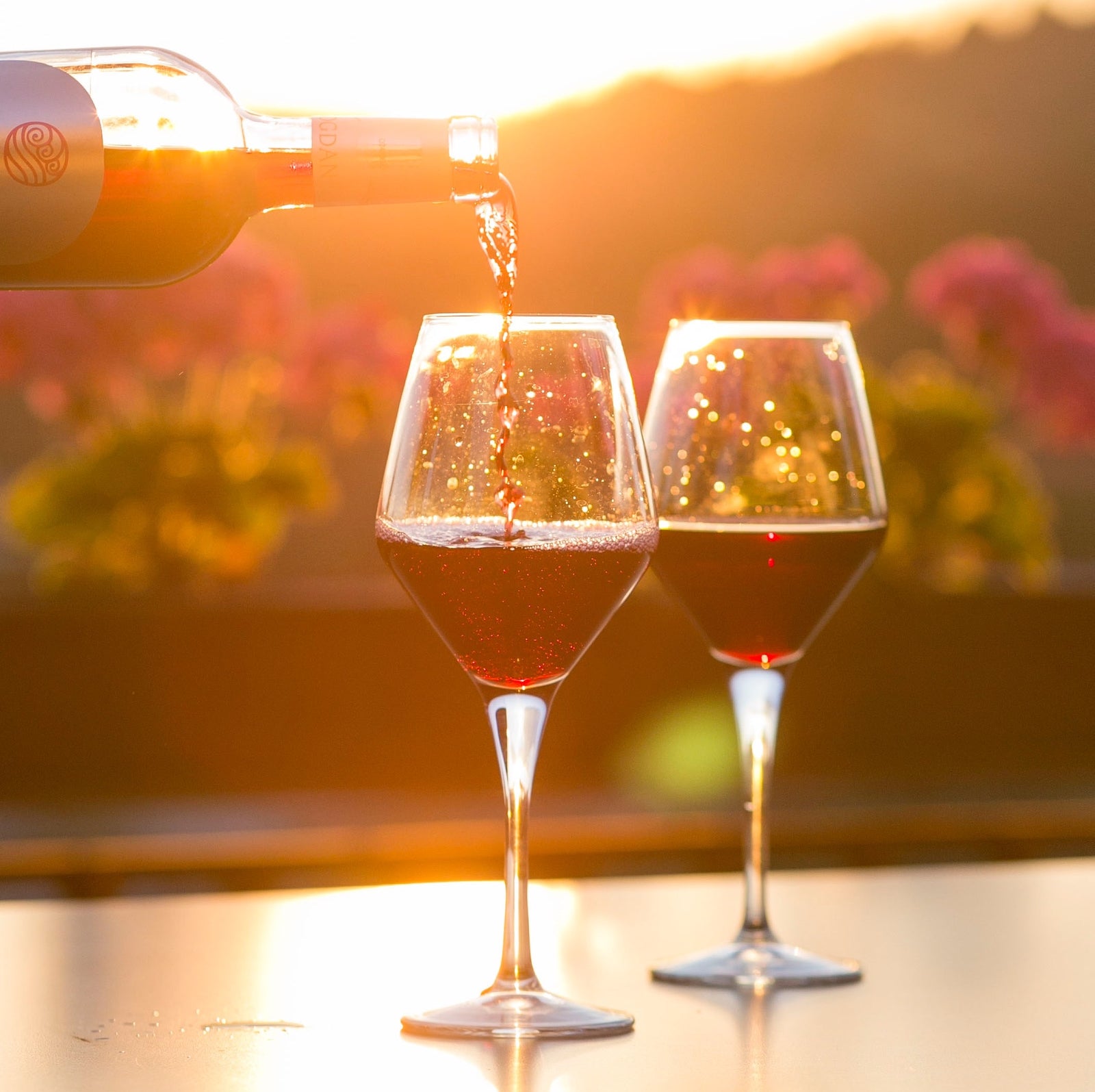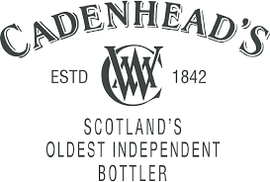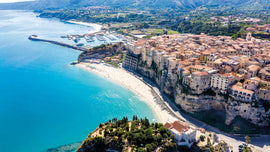While we’re all familiar with the Rioja region in Spain, we know that Spain has much more to offer than just Tempranillo and Albariño. Spain is the 3rd largest producer of wine in the world, next to Italy and France. With over one million acres of the country covered in vineyards, Spain devotes more of its land mass to wine making than any other country. There are 60 officially recognized wine regions (DOs) in Spain. The mainstream areas are referred to as Denominaciones de Origen (D.O.), which are similar to France’s appellations, and the wine produced in each region is carefully regulated for quality according to specific laws. The country is made up of 17 autonomous regions, and this month’s wines come from Navarra (home to Pamplona and the running of the bulls) and Galicia (the land of 1000 rivers with a Celtic heritage).
The Basque region, east of Rioja, represents the Navarra D.O. The cultivation of the vine in Navarra dates back to the Roman occupation of the first century A.D., but the region’s winemaking reputation blossomed in earnest during the late Middle Ages, as pilgrims on the Camino de Santiago—a medieval pilgrimage route currently enjoying a dramatic resurgence in popularity—began noting the particularly high quality of wines encountered while passing through the then-Kingdom of Navarra. Around the same time, a succession of French monarchs ascended by marriage to the Navarra throne, presiding over three centuries of cultural flowering still evidenced today by the region’s late Romanesque and high Gothic architectural gems, and by a certain residual ‘Frenchness’ that pervades local sensibilities, particularly in matters of food and wine.
Even before the establishment of D.O. Navarra in 1933, the region was known primarily for its justifiably celebrated rosés, made from the indigenous Garnacha Tinta grape variety. Beginning in the 1970s and 1980s, a handful of pioneering growers in the D.O. expanded the region’s varietal palette by experimenting with French varieties, most notably Chardonnay, Merlot, and Cabernet Sauvignon. Harnessing the marketing potential of these internationally recognizable grape varieties was nothing new, of course, but in Navarra it would prove to be an essay in terroir-varietal suitability: a latter-day French connection that would eventually impress even the most skeptical of varietal purists and usher the D.O. into a new phase of its evolution as a producer of fine wine.
Located along the River Sil in Galicia’s Southeast—situated between DO’s Ribeira Sacra and DO Bierzo— DO Valdeorras, this quiet corner of Spain is as famously rainy as its neighboring viticultural areas, but, at ninety miles inland, it finds itself more protected from the Atlantic influence that defines the area of DO Rías Baixas. The climate is mainly continental and punctuated by cold winters, warm summers, and a surprising amount of sunshine for a region known for its rain and mist. Alluvial soils and a predominance of slate help both to drain excess water and retain heat, in addition to adding a notable mineral element to the region’s wines. And while Roman gold mines may be a thing of the past, Valdeorras is still the largest producer of slate for all of Spain and much of Europe.
At the time of Roman incorporation of the region in 19 BC, Valdeorras (Ourense, Galicia) was renowned for its gold mines. Once the gold was exhausted, goes the lore, the Romans turned to the vine—making Valdeorras potentially one of the oldest viticultural areas on the Iberian Peninsula.
Valdeorras lays claim to some of Spain’s most overlooked native grapes: spicy red Mencía and rare white Godello, the latter of which was on the edge of extinction in the 1970’s when it was saved by intrepid producers who recognized it for its unique flavor profile and capability to produce Burgundian style wines, yet uniquely Spanish in character.
Now championed by sommeliers all over the world, Godellos ascension—while perhaps overdue considering it’s inherent quality and lengthy history—is adding a new layer to the story of Spain’s modern wine industry, showing that the country is more than just Tempranillo and Albarino.
|
Region / Country of Origin: San Martin de Unx, DO Navarra, Spain |
About the winery: Máximo Abete started making high quality wines in Navarra in the 1990s and today his daughters continue with the same philosophy; to maintain and recover the traditional viticulture of the abandoned mountainous areas of their town. They source the Graciano for this wine from Navasentero, a vineyard that is farmed by Julián Palacios. This plot was planted in 2005 at 450m of altitude in the “Baja Montaña” sub-zone. About the winemaking: The Abete family works as natural as possible, with minimal intervention. Fermentation in concrete vats with indigenous yeast. Malolactic fermentation occurs in stainless steel vats. It is aged for 12 months in French (80%) and American (20%) used oak barrels. No fining or stabilizing. No oenological products added, only Sulphur in moderate levels. Soft filtering before bottling in February of 2021. Organic vine-growing. Tasting Notes: Intense cherry color with purple edges; this wine contains powerful fruit aromas of blackberry, cranberry and other forest fruit, coupled with perfectly integrated notes of oak, cedar and tobacco. On the palate this wine has great structure and balance, which combines fresh fruit and well-integrated acidity, to ensure excellent aging potential. |
|
Winemaker: Yoanna and Maria Abete |
|
|
Price: $27 btl/$291.60 case |
|
|
Suggested Food Pairing: Meat stews Grilled burgers Dark Chocolate |
|
|
Region / Country of Origin: Valdeorras, Galicia, Spain |
About the Winery: It was in 1978 that Joaquin Rebolledo first began his journey in viticulture. With a goal to preserve and restructure old vineyards of native varietals, Rebolledo has pioneered the story of viticulture in Galicia. His choice to graft with Godello and Mencia was at first seen as a risky bet, but now offers him international acclaim. The family home of Joaquin Rebolledo goes back more than 4 generations. Tradition is still strong at the winery; every barrel is transported to a 2-century old cave “La Mina” where the barrels are let to rest surrounded by mineral aromas. Nowadays, the estate includes almost 100 acres of vineyards planted over slate, granite and sand in steep slopes following the Sil river. About the winemaking: Grapes are separated from the stems and are lightly crushed. Maceration occurs at about 10°C. Grapes are pressed followed by static racking. Fermentation continues on clean must in stainless steel tanks, then it ages on the lees. Filtration, cold stabilization and bottling at a steady 15°C Tasting Notes: Appearance: Straw Yellow With green reflections Nose: Quality and intensity of primary aromas, scents of apricot, peach an fennel. Mineral and balsamic Taste: Well-structures and slightly fatty texture. Good smoothness. Well balanced acidity and slightly sweet. Long fruity aftertaste. |
|
Winemaker: Catalina Maroto / Álvaro Bueno |
|
|
Price: $22 bottle / $237.60 case |
|
|
Suggested Food Pairing: Fish Shellfish Salads Spanish cheeses |
|





